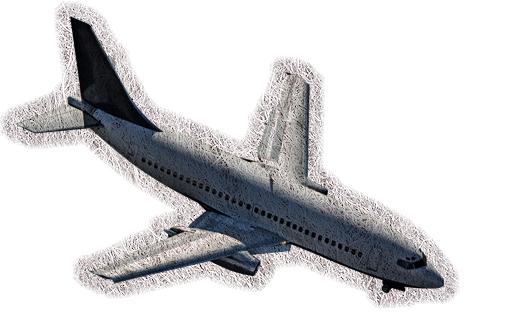Reducing Airplane Noise with Nanofibers
Reducing Airplane Noise with Nanofibers


Noise pollution can have a serious impact on human health, including noise-induced hearing impairment and disruption of rest. Loud interior noise levels within airplanes are a major issue for pilots, crew members, and travelers. Aircraft manufacturers are eager to decrease the amount of noise in the fuselage and are looking at new methods and materials. They especially want to find engineered compounds that reduce sound and are also lighter weight, which provides the added benefit of reduced fuel consumption.
Researchers at Wichita State University have demonstrated that electrospun nanocomposite fibers may be the ideal solution for this problem. As they reported during the Proceedings of the ASME International Mechanical Engineering Congress and Exposition in 2009, associate professor Ramazan Asmatulu, associate professor Mehmet Yildirim, and post-doctorate student Wassem Khan, all members of the university’s College of Engineering, have discovered that high-surface nanoscale electrospun materials display significant enhanced absorption coefficients at the nanoscale.
Electrospun nanocomposite fibers are lightweight, dimensionally stable, porous, flexible, and can absorb high, medium, and low frequencies. The researchers manufactured high-surface-area microscale and nanoscale electrospun fibers using three different polymers: polyvinylpyrrolidone, polystyrene, and polyvinylchloride. These polymers were dissolved in appropriate solvents and electrospun at various electrospinning conditions. The two-microphone transfer-function method of the B&K impedance tube was used to determine the acoustical properties of the electrospun fibers at different frequencies.
“Test results showed that the absorption coefficients of the fibers (200 nm to 7 µm) were significantly enhanced at the nanoscale,” indicates Khan. This may be the result of the higher surface area of fibers providing more interaction with sound waves/air molecules (nanofiber surface areas can be up to 10,000 times greater than for microfibers).
Advantages of Nanofibers
The diameter of the traditional acoustical fibers is in the range of micrometers (5-100µm), whereas nanofibers have diameters ranging from 10 nm to 500 nm. “Nanofibers have special characteristics such as large specific surface area, high porosity, flexibility, and extremely low weight,” says Asmatulu. “These outstanding properties are helpful in obtaining preferable acoustical damping performance.”
Traditional sound absorption materials include foams, fibers, membranes, perforated panels, etc. These materials have good noise reduction abilities at the high frequency range, but exhibit few sound absorption properties in the low- and medium-frequency range (250-2000 Hz) in which human sensitivity to noise is fairly high. “Therefore materials with excellent noise reduction properties in the low- and medium-frequency range are highly desirable in the acoustical purposes,” says Asmatulu. “Multi-polymer solutions can be electrospun simultaneously to fabricate various membranes for the sound absorption.”
Other advantages of electrospun nanofibers are:
- Many can be flame resistant.
- Physical properties can be enhanced for greater strength, flexibility, etc.
- They can be electrospun on both composite and metal surfaces.
- Adhesives can be added into polymers to improve adhesion between the fiber and surface.
- Electrospinning is an economical and technologically mature method for bulk production.
Future Possibilities
The aviation industry is currently using traditional materials such as perforated panel, foam, and fibers for noise reduction with limited results. “Compared to these traditional materials, electrospun nanofibers exhibit high absorption coefficients at all frequency ranges, which demonstrates that nanofiber membranes are a promising candidate for noise reduction in aircraft,” says Asmatulu.
The sound absorption coefficient of electrospun fibers is about 100%, even at high frequencies of sound (7,000 Hz). The sound absorption coefficient can be further improved by encapsulating carbon nanotubes in polymer nanocomposites, because “Individual nanotubes will oscillate with sound waves, helping to absorb more sound energy,” adds Asmatulu.
Different polymer fibers such as polystyrene and polyvinylpyrrolidone can be used to fabricate membranes for sound absorption. Similarly, polyvinylpyrrolidone and polyvinylchloride fibers can be used as a membrane for the sound absorption. “The fibers from these polymers exhibit outstanding sound absorption coefficients,” says Asmatulu. “Therefore they can be considered as possible alternatives to traditional materials in aircraft. Other applications for electrospun fibers include automobiles, ships, trains, as well as manufacturing facilities, shopping centers, hospitals and schools.”
Mark Crawford is an independent writer.
Multi-polymer solutions can be electrospun simultaneously to fabricate various membranes for the sound absorption.Ramazan Asmatulu, associate professor, Wichita State University




